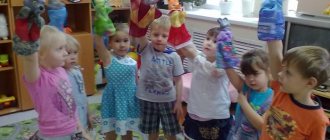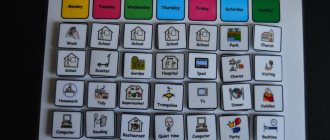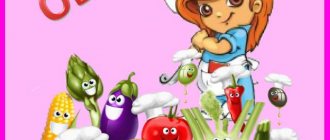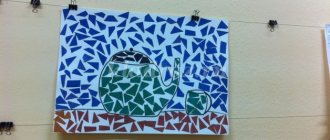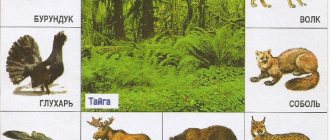Games for speech development in the senior group of kindergarten
Didactic games for the speech development of children in the senior group
“Find the extra word” Purpose:
to exercise the development of mental processes of generalization, abstraction, and identification of essential features.
Progress of the game.
Invite your child to identify the word that is redundant.
Read a series of words to your child. Each series consists of 4 words. 3 words in each series are homogeneous and can be combined based on a common feature, and 1 word differs from them and should be excluded. List of series of words: 1. Old, decrepit, small, dilapidated. 2. Brave, angry, daring, daring. 3. Apple, plum, cucumber, pear. 4. Milk, cottage cheese, sour cream, bread. 5. Hour, minute, summer, second. 6. Spoon, plate, pan, bag. 7. Dress, sweater, hat, shirt. 8. Soap, broom, toothpaste, shampoo. 9. Birch, oak, pine, strawberry. 10. Book, TV, radio, tape recorder “Is this true?” Goal:
development of auditory attention, activation of the verb vocabulary.
Progress of the game.
Children are read a poem containing absurd situations.
Children must answer the question: “Is this true? – after each sentence and prove why they think so. For the correct answer they get a chip. The one who gets the most chips wins. Is this true? They collect cheese from the bushes. Cows are grazed with hares. Oxen are being milked in the meadow. The bear starts dancing. The pumpkins began to sing songs. Mowers are mowing the forests. There is dew on the snow. Is it true that once an umbrella saved us from the rain? Why does the moon shine on us at night? What don't children like sweets? L. Stanch “The Fourth Extra” Purpose:
to teach to establish the similarities and differences of objects according to essential features, to consolidate generalization words.
Progress of the game.
Four pictures are laid out on the table, three of them belong to one thematic group, and the fourth to some other group.
The children are given a task: look at the pictures and determine which one is the odd one out. Turn over the wrong picture, and name the remaining ones in one word.” Each participant eliminates the extra picture in turn. If he makes a mistake or does not complete the task, his version is offered to the next player to complete. For each correct execution they give a chip. The one who collects the most chips wins. A series of pictures for the game: 1. Shirt, shoes, trousers, jacket. 2. Apple, gooseberry, currant, raspberry. 3. TV, wardrobe, chair, bed. 4. Cuckoo, owl, butterfly, magpie. 5. Plate, bread, pan, spoon. 6. Chamomile, birch, spruce, poplar. 7. Tomato, cucumber, carrot, plum. 8. Cap, beret, hat, sock. 9. Axe, saw, handle, plane. 10. Bear, fox, teddy bear, hare. “Right or wrong?” Goal: learn to find grammatical errors. Progress of the game.
“Do you think it’s possible to say that?”
1. Mom puts a vase of flowers on the table. 2. When they want to buy something, they lose money. 3. Grandmother and grandfather live under the house on the edge of the forest. 4. There is a beautiful carpet on the floor. “Why are the sentences inaccurate? – the teacher additionally asks the children. “Unravel the words” Goal: learn to compose sentences using these words. Progress of the game. The words in the sentence are mixed up. Try to put them in their place. What will happen? Suggestions for the game: 1. Smoke, coming, pipes, from. 2. Loves, little bear, honey. 3. Standing, in a vase, flowers, in. 4. Nuts, in, squirrel, hollow, hiding. “Find the error” Purpose: to teach how to find a semantic error in a sentence. Progress of the game. “Listen to the sentences and tell me if everything in them is correct. How should the sentence be corrected? 1. In winter, apples bloomed in the garden. 2. Below them lay an icy desert. 3. In response, I nod my hand to him. 4. The plane is here to help people. 5. I soon succeeded by car. 6. The boy broke the ball with glass. 7. After the mushrooms there will be rains. 8. In spring, the meadows flooded the river. 9. The snow was covered with a lush forest “Explain why...” Purpose: to teach correctly, construct sentences with a cause-and-effect relationship, develop logical thinking. Progress of the game. The facilitator explains that the children will have to complete the sentences that the facilitator begins to say using the word “because.” You can select several options for one beginning of a sentence, the main thing is that they all correctly reflect the reason for the event stated in the first part. For each correctly executed continuation, players receive a chip. The one who collects the most chips wins. Unfinished sentences for the game: Vova got sick... (got a cold) Mom took an umbrella... (it's raining) The children went to bed... (late) I'm really thirsty... (hot) The ice on the river melted... (warm) The trees swayed a lot... (the wind is blowing) It became very cold... (it started snowing) “Say a word” Goal: to reinforce the use of nouns in the genitive plural in speech. Progress of the game. Familiar lines of poetry are read aloud to children, without finishing the last word. (This word is in the genitive plural). Children add the missing word and receive a chip for each correct answer. The one who gets the most chips wins. *** I give you my word of honor: Yesterday at half past six. I saw two pigs. Without hats and... (shoes) *** Wait, wasn't it for you Last week. I sent two pairs of Excellent... (galoshes) *** Robin Bobin Barabek. Ate forty... (man) *** He said: “You are a villain, You devour people, So, for this my sword - Your head from... (shoulders) *** Ant, ant Does not regret... (bast shoes) *** Where is the killer , where is the villain? I’m not afraid of him... (claws) -5- “It flies, not a bird” Purpose: differentiation of the concepts of “birds” and “insects”. Progress of the game. The presenter asks riddles about birds and insects. Children solve the riddles and explain which thematic group this animal belongs to. If the answer is correct, the presenter gives the child a chip or a symbol of that animal. The one who collects the most chips wins. Before the game, the presenter reminds the children of the identifying characteristics of birds: they have feathers, beaks, claws, wings, they build nests and hatch chicks, they can sing, they are big. Insects are small, have six legs, do not hatch chicks, and have no feathers. In the dark dungeon, the maidens are beautiful. Without thread, without knitting needles Knitting. (Bees in the hive) *** Red paws Pinching the heels (Goose) *** Black, agile, Shouts “krak”, Enemy of worms. (Rook) *** Not an animal, not a bird, But a nose like a knitting needle. (Mosquito) *** Appeared in a yellow fur coat. Goodbye, two shells. (Chicken) *** A bird flew, Not feathered, not winged, Long nose, Thin voice. Whoever kills her will shed human blood. (Mosquito) Many craftsmen cut down a hut without corners. (Ants) *** A little boy in a gray shirt scurries around the yards, collects crumbs, spends the night in the field, steals hemp. (Sparrow) *** In a clearing near the fir trees, The house is built of needles. It is not visible behind the grass, but there are a million residents in it. (Anthill.) *** There is a palace on a pole, There is a singer in the palace, And his name is... (starling). *** I buzz, I buzz, I sit on a branch, I keep repeating the letter Z, Knowing this letter firmly, I buzz in the spring and summer. (Beetle) *** Vereshchanya, white-sided. And her name is... (magpie). *** The flower was sleeping and suddenly woke up: He didn’t want to sleep anymore. He moved, perked up, soared up and flew away. (Butterfly)
We recommend watching:
Games for the development of speech for children 5-7 years old Speech games and exercises for the development of speech for children 5-7 years old Didactic games for children 5-7 years old: Winter sports Didactic game for children 4-7 years old. Shop "Tails"
Similar articles:
Assignments on the topic “Forest” for children 6-8 years old
Methods of using didactic games in kindergarten in the senior preparatory group
Card index of games for speech development of preschool children
Myakisheva Yulia
Card index of games for speech development of preschool children
Card index of didactic games on the speech development of preschool children .
Myakisheva Yu. V.
1.“Who talks like that?”
Goal: expanding vocabulary, developing reaction speed .
Progress: the teacher throws the ball to the children one by one, naming the animals. Children, returning the ball, must answer how this or that animal gives a voice: The cow moos, the Tiger growls. The snake hisses. The mosquito squeaks. The dog barks. The wolf howls. The duck quacks. The pig grunts. Option 2. The speech therapist throws the ball and asks: “Who is growling?”
,
“Who’s mooing?”
,
"Who's barking?"
,
"Who's crowing?"
etc.
2."Who lives where?"
Goal: to consolidate children’s knowledge about the homes of animals and insects. Consolidating the use of the grammatical form of the prepositional case with the preposition “in” children’s
.
Progress: Throwing the ball to each child in turn, the teacher asks a question, and the child, returning the ball, answers. Option 1. teacher: -Children: Who lives in a hollow? -Squirrel. Who lives in a birdhouse? - Starlings. Who lives in the nest? - Birds. Who lives in the booth? - The dog. Who lives in the hive? - Bees. Who lives in the hole? - Fox. Who lives in the lair? -Wolf. Who lives in the den? - A bear. Option 2. teacher: - Children: Where does the bear live? - In a den. Where does the wolf live? - In the lair. Option 3. Work on the correct construction of the sentence. Children are asked to give a complete answer: “The bear lives in a den”
.
3."Give me a word"
Goal: development of thinking , speed of reaction.
Move: the teacher, throwing the ball to each child in turn, asks: “The crow is croaking, and what about the magpie?” The child, returning the ball, must answer: - The magpie is chirping. Examples of questions: - The owl flies, but what about the rabbit? - The cow eats hay, and the fox? - The mole digs holes, and the magpie? - The rooster crows, and the chicken? - The frog croaks, and the horse? - The cow has a calf, and the sheep? – The bear cub has a mother bear, and the baby squirrel?
4.“Who moves how?”
Goal: enrichment of children's , development of thinking , attention, imagination, dexterity.
Move: the teacher, throwing the ball to each child, names an animal, and the child, returning the ball, pronounces a verb that can be attributed to the named animal. Teacher: - Children: Dog - stands, sits, lies, walks, sleeps, barks, serves (cat, mouse)
5."Hot Cold"
Goal: to consolidate in the child’s mind and vocabulary the opposite characteristics of objects or antonym words.
Move: the teacher, throwing the ball to the child, says one adjective, and the child, returning the ball, calls another - with the opposite meaning. Teacher: - Children: Hot-cold. Good bad. Smart-stupid Cheerful-sad. Sharp-dull. Smooth-rough.
6.“What happens in nature?”
Goal: to consolidate the use of verbs in speech, agreement of words in a sentence.
Move: the teacher, throwing the ball to the child, asks a question, and the child, returning the ball, must answer the question asked. It is advisable to play the game according to themes. Example: Theme “Spring”
teacher: -Children: The sun - what is it doing? - It shines, it warms. Streams - what are they doing? -They are running and murmuring. Snow - what does it do? — It’s getting dark, melting. Birds - what are they doing? - They fly in, build nests, sing songs. Drops - what does it do? - It rings and drips. The bear - what does it do - wakes up, crawls out of the den.
7.“Who can perform these actions?”
Goal: activation of children's , development of imagination , memory, dexterity. Progress: the teacher, throwing the ball to the child, names the verb, and the child, returning the ball, names the noun that matches the named verb. Teacher: - Children: Walking - person, animal, train, steamboat, rain... A stream runs, time, an animal, a person, a road... A bird, a butterfly, a dragonfly, a fly, a beetle, an airplane flies... A fish, a whale, a dolphin, a boat, a ship, a man floats...
8.“What is it made of?”
Goal: to consolidate the use of relative adjectives and methods of their formation in children’s .
Move: the teacher, throwing the ball to the child, says: “Boots made of leather”
, and the child, returning the ball, answers:
“Leather.”
Teacher: - Children: Fur mittens Copper basin Copper vase Crystal crystal Mittens wool
9."Put it into pieces"
Goal: orientation in space.
Progress: the character Fyodor asks the guys to help her: put pots and pans on the bottom shelf, plates, spoons, knives and forks on a higher shelf, and saucers and jugs on the top shelf.
10.“Who was who?”
Goal: development of thinking , expansion of vocabulary, consolidation of case endings.
Move: the teacher, throwing the ball to one of the children , names an object or animal, and the child, returning the ball to the speech therapist, answers the question by whom (what)
there was a previously named object: Chicken - egg. Bread - flour. The horse is a foal. Wardrobe - board. Cow - calf. The bicycle is made of iron. Dud is an acorn. Shirt - fabric. Fish - caviar. Boots - leather. Apple tree - seed. The house is made of bricks. The frog is a tadpole. Strong - weak. A butterfly is a caterpillar. An adult is a child.
11.“Which vegetable?”
Goal: development of tactile , visual and olfactory analyzers.
Procedure: the teacher cuts the vegetables, the children smell and taste them. The teacher gives an example: “The tomato is sweet, but the garlic is spicy.”
12.“What does it sound like?”
Goal: development of auditory attention and observation.
Progress: the teacher behind the screen plays various musical instruments (tambourine, bell, wooden spoons)
. Children must guess what it sounds like.
13.“What happens in the fall?”
Purpose: to teach the seasons, their sequence and main features.
Progress: on the table are mixed pictures depicting various seasonal phenomena (it is snowing, a flowering meadow, an autumn forest, people in raincoats and with umbrellas, etc.). The child chooses pictures that depict only autumn phenomena and names them.
14.“What’s missing?”
Goal: development of attention and observation.
Progress: the teacher lays out 4 vegetables on the table: “Children, look carefully at what is on the table. These are onions, cucumbers, tomatoes, peppers. Look carefully and remember. Now close your eyes.” Children close their eyes, and the teacher removes one vegetable. “What’s missing?”
Children remember and name the vegetable.
15.“Catch and throw – name the colors”
Goal: selection of nouns for the adjective denoting color. Consolidating the names of primary colors, developing imagination in children .
Move: the teacher, throwing the ball to the child, names an adjective denoting color, and the child, returning the ball, names a noun that matches this adjective. Teacher: - Children: Red - poppy, fire, flag Orange - orange, carrot, dawn Yellow - chicken , sun, turnip Green - cucumber, grass, forest Blue - sky, ice, forget-me-nots Blue - bell, sea, sky Violet - plum, lilac, dusk
16."Whose head?"
Goal: expanding children's through the use of possessive adjectives. Procedure: the teacher, throwing the ball to the child, says: “The crow has the head...”
, and the child, throwing the ball back, finishes:
“...crow.”
For example: A lynx has a lynx’s head. In a fish - fishy In a cat - feline In a magpie - magpie In a horse - equine In an eagle - eagle In a camel - camel
17."The Fourth Wheel"
Goal: to consolidate children’s to identify common features in words and develop the ability to generalize.
Move: the teacher, throwing the ball to the child, names four words and asks to determine which word is superfluous. For example: blue, red, green, ripe. Zucchini, cucumber, pumpkin, lemon. Cloudy, stormy, gloomy, clear.
18."One is many"
various types of endings of nouns in children’s
Progress: the teacher throws the ball to the children, calling singular nouns. Children throw the ball back, calling plural nouns. Example: Table - tables, chair - chairs. Mountain - mountains, leaf - leaves. House - houses, socks - socks. Eye - eyes, piece - pieces. Day - days, jump - jumps. Sleep - dreams, gosling - goslings. Forehead - foreheads, tiger cub - tiger cubs.
19."Pick up the signs"
Goal: activation of the verb dictionary.
Progress: the teacher asks the question “What can squirrels do?”
Children answer the question and find
a picture for the question asked . Sample answers: Squirrels can jump from branch to branch.
Squirrels know how to make warm nests. 20. "Animals and their young"
Goal: to consolidate the names of baby animals in children’s , consolidate word formation skills, develop dexterity , attention, and memory.
Move: throwing the ball to the child, the teacher names an animal, and the child, returning the ball, names the baby of this animal. The words are arranged into three groups according to the method of their formation. The third group requires memorizing the names of the cubs. Group 1. The tiger has a tiger cub, the lion has a lion cub, the elephant has a cub, the deer has a fawn, the elk has a calf, the fox has a fox calf. Group 2. The bear has a baby bear, the camel has a baby camel, the hare has a baby hare, the rabbit has a baby rabbit, the squirrel has a baby squirrel. Group 3. The cow has a calf, the horse has a foal, the pig has a piglet, the sheep has a lamb, the hen has a chick, the dog has a puppy.
21.“What is round?”
Goal: expanding children's through adjectives, developing imagination , memory, and dexterity.
Move: the teacher, throwing the ball to the children, asks a question; the child who caught the ball must answer it and return the ball. -What is round? (ball, globe, wheel, sun, moon, cherry, apple)
– what is long?
(road, river, rope, tape, cord, thread)
- what is tall?
(mountain, tree, rock, person, pillar, house, closet)
- what is prickly?
(hedgehog, rose, cactus, needles, Christmas tree, wire)
22. “Pick up a word”
Goal: development of word formation skills, selection of related words. For example, bee - bee, little bee, beekeeper, beekeeper, bees, etc.
23."Generalizing concepts"
Goal: expansion of vocabulary through the use of generalizing words, development of attention and memory , ability to correlate generic and specific concepts.
Option 1. Move: the teacher names a generalizing concept and throws the ball to each child in turn. The child, returning the ball, must name the objects related to that general concept. Teacher: - Children: Vegetables - potatoes , cabbage, tomato, cucumber, radish
Option 2. The teacher names specific concepts, and the children name generalizing words. Teacher: Children: Cucumber, tomato - Vegetables.
24."Good bad"
Goal: introducing children to the contradictions of the world around them, developing coherent speech and imagination.
Progress: the teacher sets the topic of discussion. Children, passing the ball in a circle, tell what, in their opinion, is good or bad in weather phenomena. Teacher: Rain. Children: Rain is good: it washes away dust from houses and trees, it is good for the earth and the future harvest, but bad - it gets wet us, it can be cold.Teacher: City.Children: It’s good that I live in the city: you can go on the subway, by bus, there are a lot of good shops, the bad thing is that you won’t see a live cow or rooster, it’s stuffy, dusty.
25."Close - Far"
Goal: development of auditory attention , hearing acuity.
Progress: the teacher behind the screen produces sound with a large or small toy. Children determine the size of the toy (large or small)
26."Call me kindly"
Goal: strengthening the ability to form nouns using diminutive suffixes, developing dexterity and reaction speed.
Move: the teacher, throwing the ball to the child, calls the first word (for example, ball), and the child, returning the ball, calls the second word (ball)
.
Words can be grouped by similar endings. Table-table, key-key. Beanie hat, squirrel squirrel. Book-book, spoon-spoon. Head-head, picture-picture .
Soap-soap, mirror-mirror. Doll-doll, beet-beet. Braid-braid, water-water. Beetle-beetle, oak-oak. Cherry-cherry, tower-tower. Dress-dress, chair-chair. 27. "Fun account"
the agreement of nouns with numerals in children’s
Move: the teacher throws the ball to the child and pronounces a combination of a noun and the numeral “one”
, and the child, returning the ball, responds with the same noun, but in combination with the numeral
“five”
,
“six”
,
“seven”
,
“eight”
. Example: One table - five tables One elephant - five elephants One crane - five cranes One swan - five swans One nut - five nuts One cone - five cones One goose - five goslings One chicken - five chickens One hare - five hares One hat - five hats One can - five cans.
28.“Guess who called?”
Goal: distinguishing the most abbreviated sound complexes by timbre.
Move: the driver turns his back to the children and uses the sound complex “pee-pee”
determines who called him. The child the teacher points to calls the driver.
Article:
GAMES ON THE SOUND CULTURE OF SPEECH Game “Replace the sound” Purpose: To teach children to mentally rearrange, replace sounds with given ones, and name the resulting new words. Material: Rows of words for transformation, object pictures with words that should be obtained. Progress of the game: The adult sets the sound with which the first or last sound in the word will need to be replaced. Then he lays out the pictures and pronounces the words, and with their help the child mentally replaces the sound in the original word with the given one and says the resulting word out loud. For example, you need to replace the first (porridge - cup, nut - seagull, suit - part) or the last sound (enemy - doctor, beak - key, chalk - sword) with [h]. As you practice, the game can be played by ear, without using pictures “What sound is missing?” Goal: To improve children's sound analysis skills. Material: Subject pictures for each word. Progress of the game: An adult selects pictures with words, lays them out on the table and names them, replacing the desired sound with a pause. The child must guess what the word is using the corresponding picture and identify the missing sound in it. For example, pi[ ]ama - the sound [zh] is gone, vocal[ ]al -sound [z], tarel[ ]a - sound [k], conf[ ]a - sound [t], mar-ty[ ]ka - [w], maka[ ]ons - [r], etc. An adult can select pictures with words for a specific sound, the pronunciation of which needs to be reinforced in the child. “Change the word” Purpose: To practice the formation of nouns with a diminutive meaning. Practice diction. Progress of the game: Children must change the words so that the sound [zh] appears in them: friend - friend, pie - pie, boot - boot, snow - snowball, horn - horn, meadow - meadow, cottage cheese - cottage cheese, flag - flag. “The third wheel” Goal: To develop the ability to hear a certain sound in a word. Progress of the game: From three pictures, children must remove the one whose name does not have the sound [w]: tire, lily of the valley, squirrel; hat, accordion, saw; dove, fur coat, tumbler; mice, banana, gun. “Name the picture and find the first sound” Purpose: To teach children to find the given first sound in a word at the stage of loud pronunciation of the word by the child himself. Material: Cards with drawn pictures. Progress of the game: Children have cards with drawn pictures. The teacher names any vowel sound, the children say the names of their pictures out loud and find the one they need. If the picture is named correctly, the presenter allows you to cover it with a chip. The one who closes their pictures first wins. “Trap” Goal: To develop the ability to hear a certain sound in a word. Progress of the game: The teacher invites the children to “open the traps”, i.e. place your elbows on the table, parallel to each other, straightening your palms, which are the “traps”. Educator: If you hear a given sound in a word, then the “traps” need to be slammed, i.e. clap your hands. Words are selected by the teacher depending on the topic of the lesson. “Chain of words” Purpose: To expand the stock of nouns in the active vocabulary of children. Material: Ball, badges, etc. How to play: In this game you need to create a chain of words so that the last sound of the previous word coincides with the first sound of the next one. The players sit in a circle. One of them throws a ball to someone and says a word (noun), such as “glass.” The person receiving the ball says a word that begins with the last sound of the spoken word, for example, “leg.” The next one says, for example, “April”, followed by “leaf”, etc. The one who does not completely leave the game wins. The winner is awarded a badge. “Which sound is heard most often?” Purpose: To train children in identifying the sound that sounds more often; develop mental operations, phonemic hearing. Progress of the game: The presenter gives the children the task: “I will read a poem, you listen carefully and determine which sound is heard most often.” I don’t buzz when I sit, I don’t buzz when I walk, I don’t buzz when I work, I buzz when I spin. The mosquito buzzed subtly: Z-z-z - he sings loudly, loudly, Repeats his story many times to the frisky midges. VOCABULARY DEVELOPMENT GAMES “Catch and throw - name the colors” Purpose: To practice selecting nouns for the adjective denoting color. Material: Ball. Progress of the game: What color we have - we will tell you about it. An adult, throwing a ball to a child, names an adjective denoting color, and the child, returning the ball, names a noun that matches this adjective. Adult: red – Child: poppy, fire, orange flag – orange, carrot, dawn; yellow - chicken, sun, turnip; green - cucumber, grass, forest; blue - sky, ice, forget-me-nots; blue - bell, sea, ink; purple - plum, lilac, twilight. “What object is this?” Purpose: To consolidate the agreement of an adjective with a noun. Material: Ball. How to play: An adult names the sign and throws the ball to one of the children. The child who catches the ball names the object that has this sign and returns the ball to the speech therapist. Next, the adult throws the ball to other children in turn. For example: Long - rope, fur coat, thread, street, elastic, braid, skirt, road, elastic, ribbon, shirt, curtain. Long - train, lace, cucumber, day, pencil, knife, jacket. Wide - street, river, ribbon, road, jacket, skirt, elastic band. Wide - scarf, alley, courtyard, corridor, window sill. Red - star, berry, ribbon, hat, shirt, T-shirt, raspberry. Red - ball, scarf, tomato, poppy, house, pencil. Round - ball, globe, petal, tomato. Round - sun, egg, apple, wheel. “Pick up a word” Goal: Expand children’s vocabulary, develop the ability to coordinate an adjective with a noun. How to play: This game can be played with a ball, throwing it to each other. What can you say about: “Fresh”... (air, cucumber, bread, wind); “old”... (house, stump, person, shoe); “fresh”... (bun, news, newspaper, tablecloth); “old”...(furniture, fairy tale, book, grandmother); “fresh”... (milk, meat, jam); “old”...(chair, seat, window). “Guess the object” Goal: Develop thinking, activate vocabulary. How to play: Guess the item by the name of its parts. Body, cabin, wheels, steering wheel, headlights, doors (truck). Trunk, branches, twigs, leaves, bark, roots (tree). Bottom, lid, walls, handles (pan). Deck, cabin, anchor, stern, bow (ship). Entrance, floor, stairs, apartments, attic (house). Wings, cockpit, tail, engine (airplane). Eyes, forehead, nose, mouth, eyebrows, cheeks (face). Sleeves, collar, cuffs (shirt). Head, torso, legs, tail, udder (cow). Floor, walls, ceiling (room). Window sill, frame, glass (window). “Family” Purpose: To teach children to understand family relationships, to use words denoting kinship and relatives. Material: Ball. Progress of the game: Who are you to me and who am I to you if you are my family? An adult, throwing a ball to a child, asks a question, which the child must answer when returning the ball. Sample questions: • How are you related to mom and dad? • Who are you to your grandparents? • Do you have a sister or brother? • Name your cousins. • Who are your cousins' parents to you? This concludes our review of games. Once again we would like to draw the attention of parents to the fact that games for developing a child’s vocabulary are varied and the content depends only on your imagination and desire to work. “What grows in the forest?” Goal: To activate children’s vocabulary of nouns on the topics: “Plants”, “Animals” Material: Chairs according to the number of children. Progress of the game: The teacher selects three children and invites them to name what grows in the forest. For example, one says: “A mushroom grows in the forest,” the second says “raspberries,” the third says “spruce,” and then the first one continues again. The teacher warns that you cannot think for long. When the players break the rules, they sit down and choose a replacement. A new group of children is given a different task, for example, to list what grows in the garden or who lives in the forest. The winner is the one who names the most plants and animals. He receives a prize. “Whose home is this?” Purpose: To consolidate children’s knowledge about animal homes. Material: Pictures of animals and pictures depicting animal homes. Progress of the game: There are pictures on the board. On the left are pictures depicting animal homes, on the right are images of animals (not near their homes). The teacher explains that Dunno mixed up the animal houses. We need to help them find theirs. Children rearrange the images of animals, placing them near their homes, and then name whose homes they are: a hole - for a fox, a mouse; den - for a bear; hollow - for a squirrel, for an owl; nest - for a bird; birdhouse - for the starling; barn - for cows, calves; stable - for horses, foals; pigsty - for pigs and piglets; rabbitry - for rabbits. Before completing this task, children fix the names of the dwellings of domestic and wild animals and birds from the pictures. “Months and their sequence” Purpose: To consolidate temporary concepts in the child’s active vocabulary. Material: Ball. Progress of the game: Month after month rises - everyone will name them all. An adult with children names the months by throwing a ball on the floor: “January, February, March...”. Instead of the next month, the adult calls the child’s name: “Masha!” The child picks up the ball and continues to name the months, slamming the ball on the floor. “Catch, throw, name the days of the week” Goal: To consolidate temporary concepts in the child’s active vocabulary. Material: Ball. Progress of the game: It was not in vain that we looked at the calendar - we all remember the days of the week. The players stand in a circle. The presenter, throwing the ball to someone, can start on any day of the week: “I’ll start, you continue, name the days of the week!” Wednesday…” Everyone takes turns throwing the ball to each other and sequentially calling out the days of the week. Complication. The child and parents stand in a circle and, naming the days of the week, slam the ball on the floor for each word: “Monday. Tuesday..." Instead of the next day of the week, the adult calls the child's name: "Sasha!" The child picks up the ball and continues, throwing the ball on the floor. You can call the days of the week in reverse order. "What why?" Goal: To consolidate temporary concepts in the child’s active vocabulary. Develop thinking. Material: Ball. Progress of the game: What do we look for every year and all year round? The players stand in a circle. The presenter throws the ball to the players one by one and asks questions. For example: “Winter. And what’s behind it?” The player answers: “Spring,” and throws the ball to the leader. Question options: “Winter. And what’s behind it?” - "Spring. “What’s behind it?” “How many months are there in a year?” “Name the summer months.” “Name the first month of spring.” “Name the last month of winter.” “What month does autumn begin from?” “What month does autumn end in?” “It happens - it doesn’t happen” Goal: Expand and consolidate children’s active vocabulary. Develop logical thinking. Material: Ball. Progress of the game: What will happen, what won’t? Give me an answer quickly! The players stand in a circle. The presenter calls the seasons. For example: "Summer". And then, throwing the ball to someone, he names a natural phenomenon. For example: “Ice drift”. The child who caught the ball must say whether this happens or not. The game goes in circles. Whoever makes a mistake leaves the game. Variants of natural phenomena and seasonal changes: frost, ice drift, drops, leaf fall, blizzard, frost, rain, snow, hail, thunderstorm, etc. Complication. The child gives complete answers, explaining the possibility or impossibility of this or that natural phenomenon at a given time of year. “Say the opposite” Goal: Expand the vocabulary of antonyms in children. Material: Ball. How to play: Throw the ball to the child and say the word. The child, returning the ball, names a word with the opposite meaning. Now you and I will turn into stubborn people who do everything the opposite. I throw you a ball and say a word, and you say the opposite. For example: dark, but vice versa - light. Friend...enemy Day...night Joy...sadness (sadness) Ceiling...floor Heat...cold Evil...good Truth...lie Fast...slowly Speak...silent Buy...sell Raise...lower Throw...raise (catch) Hide...look Light...extinguish Dress... undress Lose...find Put...remove Give...take Pour...pour out Good...bad Hard...easy High...low Far...close Possible...impossible Difficult...easy Beginning...end. GAMES FOR FORMING THE GRAMMAR STRUCTURE OF SPEECH “Say kindly” Goal: To consolidate the ability to form nouns using diminutive and affectionate suffixes. Develop agility and reaction speed. Material: Ball. Progress of the game: An adult, throwing a ball to a child, calls the first word (for example, ball), and the child, returning the ball, calls the second word (ball). Words can be grouped according to similar endings. Table - table, key - key. Hat - cap, squirrel - squirrel. A book is a little book, a spoon is a spoon. The head is the head, the picture is the picture. Soap - soap, mirror - mirror. A doll is a doll, a beet is a beet. Braid - braid, water - water. Beetle - beetle, oak - oak. Cherry - cherry, tower - turret. A dress is a dress, an armchair is an armchair. A feather is a feather, glass is a piece of glass. A watch is a watch, panties are panties. "Who is this?" Goal: To activate children's vocabulary on the topic “Sports”. Form the sound-syllable structure of a word. Develop grammatical structure of speech. Progress of the game: Plays sports (who?) - athlete, female athlete practices gymnastics - gymnast, female gymnast practices figure skating - figure skater, female figure skater practices tennis - tennis player, female tennis player practices wrestling - wrestler practices acrobatics - acrobat, female acrobat skis - skier, female skier runs on skates - a speed skater, a female skater plays football - a football player, a soccer player plays hockey - a hockey player, a female hockey player plays chess - a chess player, a female chess player shoots from a rifle - an archer shoots from a bow - an archer, an archer rides a bicycle - a cyclist, a female cyclist rides a motorcycle - a motorcyclist, a motorcyclist high jumps, a long jumper - a jumper, a female jumper jumps with a parachute - a parachutist, a parachutist swims - a swimmer, a female swimmer. “Name the professions” Goal: Develop analysis and synthesis. Material: Pictures depicting different professions. Progress of the game: An adult invites children to answer the questions: Who carries the luggage? Porter. Who welds the pipes? Welder. Who installs the glass? Glazier. Who works on the crane? Crane operator. Who lays the stones? Mason. Who sharpens knives? Grinder. Who repairs the clock? Watchmaker. Who works on an excavator? Excavator operator. Next, the adult asks the question: - What is the common part in the words porter, welder, glazier, crane operator, mason, grinder, watchmaker, excavator operator? When pronouncing these words, the adult emphasizes the suffix -schik- in intonation and voice.
Progress of the game: The teacher asks questions, the children answer them.
What can you do in the forest? (Walk; pick berries, mushrooms; hunt; listen to birdsong; relax)
.
"Who what)
flies?
Goals: consolidate knowledge about animals, insects, birds, develop attention and memory.
How to play: Children stand in a circle. The selected child names an object or animal, raises both hands up and says: “Flying”
.
When an object that flies is named, all children raise both hands up and say “Flying”
If not, they don’t raise their hands. If one of the children makes a mistake, he leaves the game.
"Render a guess, we'll guess it"
Objectives: consolidate knowledge about garden plants; the ability to name their signs, describe and find them by description, develop attention .
Progress of the game: Children describe any plant in the following order6 shape, color, taste. The driver should recognize the plant from the description.
“When does this happen?”
Goals: to consolidate children’s knowledge of the parts of the day, to develop speech and memory.
“What then?”
Objectives: to consolidate children’s knowledge about the parts of the day, about the activities of children at different times of the day; develop speech and memory.
“Where is what?”
Goal: to learn to identify with a given sound a group of words consolidate the correct pronunciation of certain sounds in words; develop attention .
Progress of the game: The teacher names the object and invites the children to answer where they can put it. For example:
- “Mom brought bread and put it in ... (breadbox)
.
- Masha poured sugar... Where? (Into the sugar bowl)
— Vova washed his hands and put down the soap. Where? (On a soapbox)
“What else do they talk about?”
Purpose: to consolidate and clarify the meaning of polysemantic words; cultivate a sensitive attitude to the compatibility of words in meaning, develop speech .

